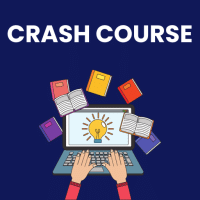B.Ed Entrance Exam > B.Ed Entrance Questions > How do teaching aids contribute to enhancing ...
Start Learning for Free
How do teaching aids contribute to enhancing students' learning experiences?
- a)By limiting students' vocabulary expansion
- b)By discouraging engagement and curiosity
- c)By fostering hands-on experiences
- d)By promoting rote memorization
Correct answer is option 'C'. Can you explain this answer?
Verified Answer
How do teaching aids contribute to enhancing students' learning experi...
Teaching aids contribute to enhancing students' learning experiences by fostering hands-on experiences that directly engage students in the learning process. By providing concrete examples and interactive tools, teaching aids help students grasp complex concepts more effectively and encourage active participation in the classroom.
View all questions of this test
Most Upvoted Answer
How do teaching aids contribute to enhancing students' learning experi...
Enhancement of Learning through Teaching Aids
Teaching aids play a crucial role in enriching students' learning experiences, primarily by fostering hands-on experiences. Here's how they contribute effectively:
1. Encouraging Active Participation
- Teaching aids engage students actively, allowing them to participate in the learning process.
- Through interactive tools, students can manipulate materials, leading to better understanding and retention of concepts.
2. Supporting Diverse Learning Styles
- Different students have varying learning preferences, such as visual, auditory, or kinesthetic.
- Teaching aids cater to these diverse needs, ensuring that every student can access and comprehend the material effectively.
3. Enhancing Understanding Through Visualization
- Visual aids like charts, diagrams, and models help in illustrating complex ideas.
- They break down information into digestible segments, making it easier for students to grasp challenging concepts.
4. Promoting Critical Thinking and Problem-Solving
- Hands-on activities encourage students to think critically and solve problems.
- Engaging with real-world scenarios through simulations or experiments fosters a deeper understanding of the subject matter.
5. Creating a Stimulating Learning Environment
- Teaching aids make the learning environment more dynamic and interesting.
- A stimulating atmosphere increases student motivation and curiosity, leading to a more profound learning experience.
In conclusion, teaching aids are instrumental in enhancing students' learning experiences by fostering hands-on engagement, catering to diverse learning styles, and promoting critical thinking. Their use transforms traditional learning into an interactive and enjoyable process, ultimately leading to better educational outcomes.
Teaching aids play a crucial role in enriching students' learning experiences, primarily by fostering hands-on experiences. Here's how they contribute effectively:
1. Encouraging Active Participation
- Teaching aids engage students actively, allowing them to participate in the learning process.
- Through interactive tools, students can manipulate materials, leading to better understanding and retention of concepts.
2. Supporting Diverse Learning Styles
- Different students have varying learning preferences, such as visual, auditory, or kinesthetic.
- Teaching aids cater to these diverse needs, ensuring that every student can access and comprehend the material effectively.
3. Enhancing Understanding Through Visualization
- Visual aids like charts, diagrams, and models help in illustrating complex ideas.
- They break down information into digestible segments, making it easier for students to grasp challenging concepts.
4. Promoting Critical Thinking and Problem-Solving
- Hands-on activities encourage students to think critically and solve problems.
- Engaging with real-world scenarios through simulations or experiments fosters a deeper understanding of the subject matter.
5. Creating a Stimulating Learning Environment
- Teaching aids make the learning environment more dynamic and interesting.
- A stimulating atmosphere increases student motivation and curiosity, leading to a more profound learning experience.
In conclusion, teaching aids are instrumental in enhancing students' learning experiences by fostering hands-on engagement, catering to diverse learning styles, and promoting critical thinking. Their use transforms traditional learning into an interactive and enjoyable process, ultimately leading to better educational outcomes.

|
Explore Courses for B.Ed Entrance exam
|

|
Question Description
How do teaching aids contribute to enhancing students' learning experiences?a)By limiting students' vocabulary expansionb)By discouraging engagement and curiosityc)By fostering hands-on experiencesd)By promoting rote memorizationCorrect answer is option 'C'. Can you explain this answer? for B.Ed Entrance 2025 is part of B.Ed Entrance preparation. The Question and answers have been prepared according to the B.Ed Entrance exam syllabus. Information about How do teaching aids contribute to enhancing students' learning experiences?a)By limiting students' vocabulary expansionb)By discouraging engagement and curiosityc)By fostering hands-on experiencesd)By promoting rote memorizationCorrect answer is option 'C'. Can you explain this answer? covers all topics & solutions for B.Ed Entrance 2025 Exam. Find important definitions, questions, meanings, examples, exercises and tests below for How do teaching aids contribute to enhancing students' learning experiences?a)By limiting students' vocabulary expansionb)By discouraging engagement and curiosityc)By fostering hands-on experiencesd)By promoting rote memorizationCorrect answer is option 'C'. Can you explain this answer?.
How do teaching aids contribute to enhancing students' learning experiences?a)By limiting students' vocabulary expansionb)By discouraging engagement and curiosityc)By fostering hands-on experiencesd)By promoting rote memorizationCorrect answer is option 'C'. Can you explain this answer? for B.Ed Entrance 2025 is part of B.Ed Entrance preparation. The Question and answers have been prepared according to the B.Ed Entrance exam syllabus. Information about How do teaching aids contribute to enhancing students' learning experiences?a)By limiting students' vocabulary expansionb)By discouraging engagement and curiosityc)By fostering hands-on experiencesd)By promoting rote memorizationCorrect answer is option 'C'. Can you explain this answer? covers all topics & solutions for B.Ed Entrance 2025 Exam. Find important definitions, questions, meanings, examples, exercises and tests below for How do teaching aids contribute to enhancing students' learning experiences?a)By limiting students' vocabulary expansionb)By discouraging engagement and curiosityc)By fostering hands-on experiencesd)By promoting rote memorizationCorrect answer is option 'C'. Can you explain this answer?.
Solutions for How do teaching aids contribute to enhancing students' learning experiences?a)By limiting students' vocabulary expansionb)By discouraging engagement and curiosityc)By fostering hands-on experiencesd)By promoting rote memorizationCorrect answer is option 'C'. Can you explain this answer? in English & in Hindi are available as part of our courses for B.Ed Entrance.
Download more important topics, notes, lectures and mock test series for B.Ed Entrance Exam by signing up for free.
Here you can find the meaning of How do teaching aids contribute to enhancing students' learning experiences?a)By limiting students' vocabulary expansionb)By discouraging engagement and curiosityc)By fostering hands-on experiencesd)By promoting rote memorizationCorrect answer is option 'C'. Can you explain this answer? defined & explained in the simplest way possible. Besides giving the explanation of
How do teaching aids contribute to enhancing students' learning experiences?a)By limiting students' vocabulary expansionb)By discouraging engagement and curiosityc)By fostering hands-on experiencesd)By promoting rote memorizationCorrect answer is option 'C'. Can you explain this answer?, a detailed solution for How do teaching aids contribute to enhancing students' learning experiences?a)By limiting students' vocabulary expansionb)By discouraging engagement and curiosityc)By fostering hands-on experiencesd)By promoting rote memorizationCorrect answer is option 'C'. Can you explain this answer? has been provided alongside types of How do teaching aids contribute to enhancing students' learning experiences?a)By limiting students' vocabulary expansionb)By discouraging engagement and curiosityc)By fostering hands-on experiencesd)By promoting rote memorizationCorrect answer is option 'C'. Can you explain this answer? theory, EduRev gives you an
ample number of questions to practice How do teaching aids contribute to enhancing students' learning experiences?a)By limiting students' vocabulary expansionb)By discouraging engagement and curiosityc)By fostering hands-on experiencesd)By promoting rote memorizationCorrect answer is option 'C'. Can you explain this answer? tests, examples and also practice B.Ed Entrance tests.

|
Explore Courses for B.Ed Entrance exam
|

|
Signup for Free!
Signup to see your scores go up within 7 days! Learn & Practice with 1000+ FREE Notes, Videos & Tests.


















